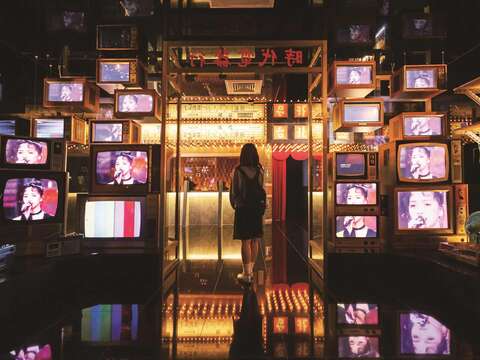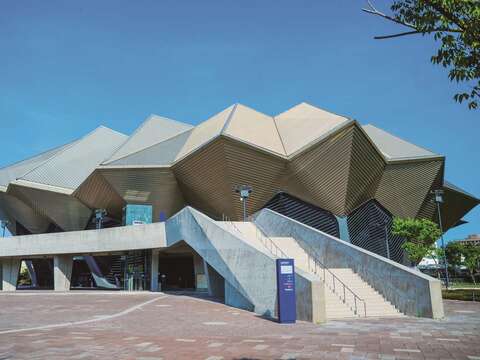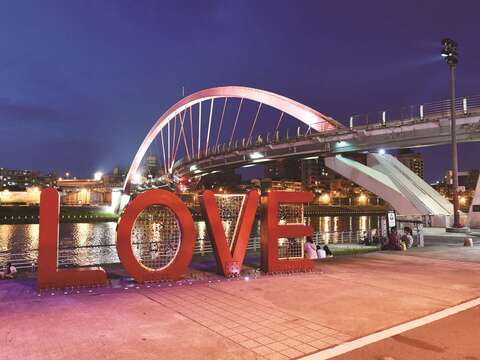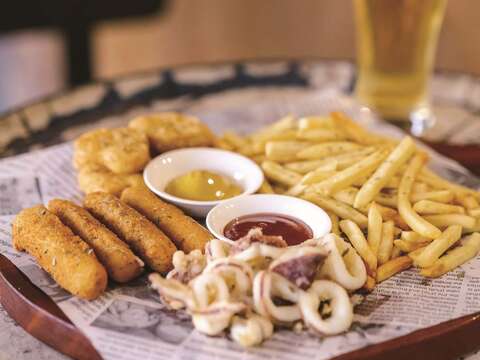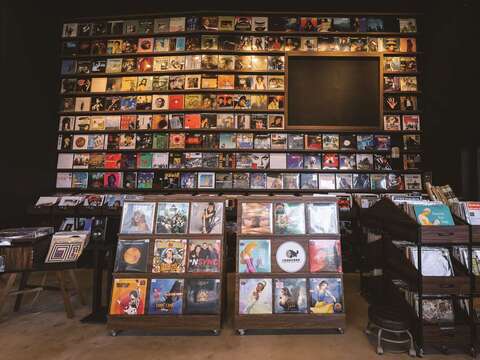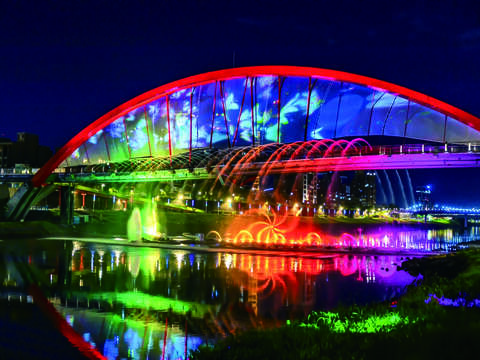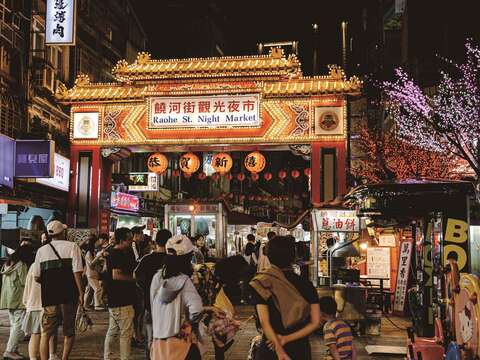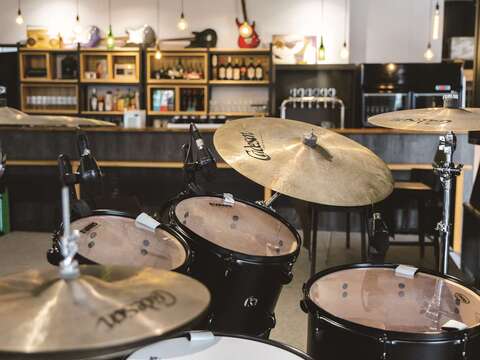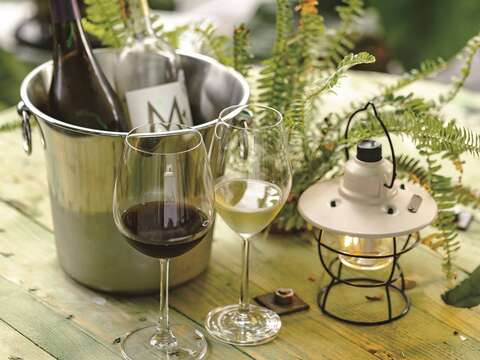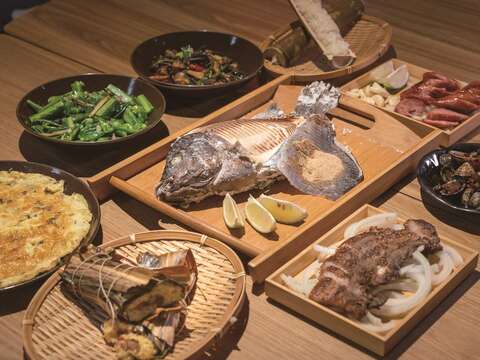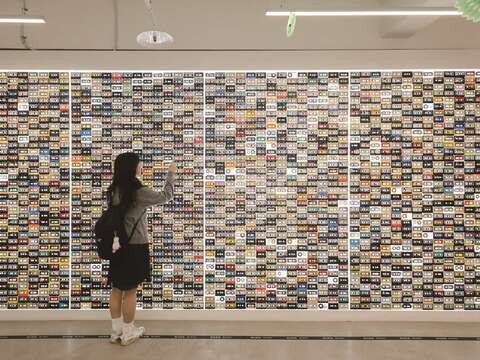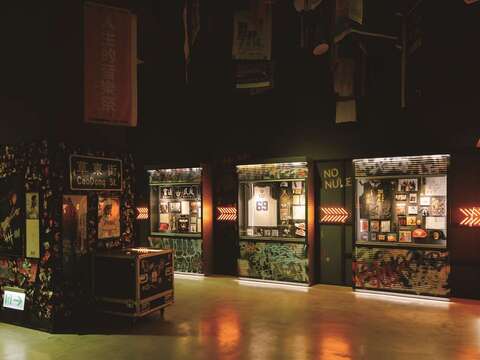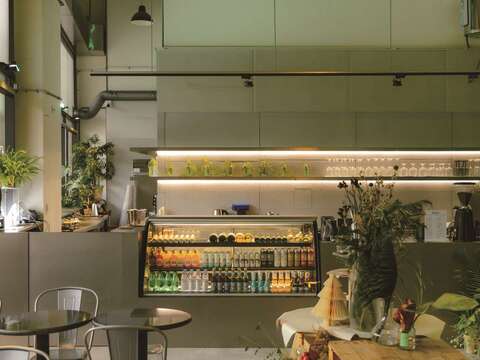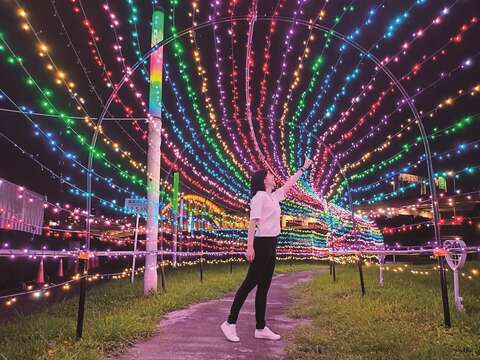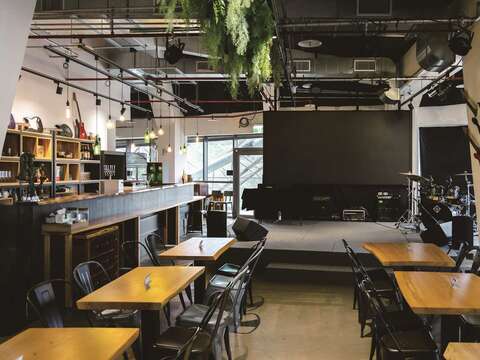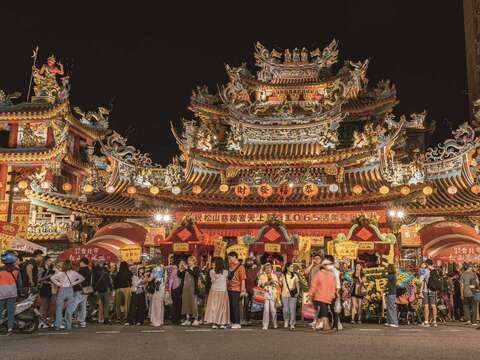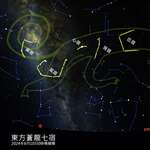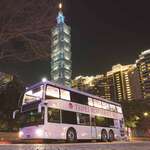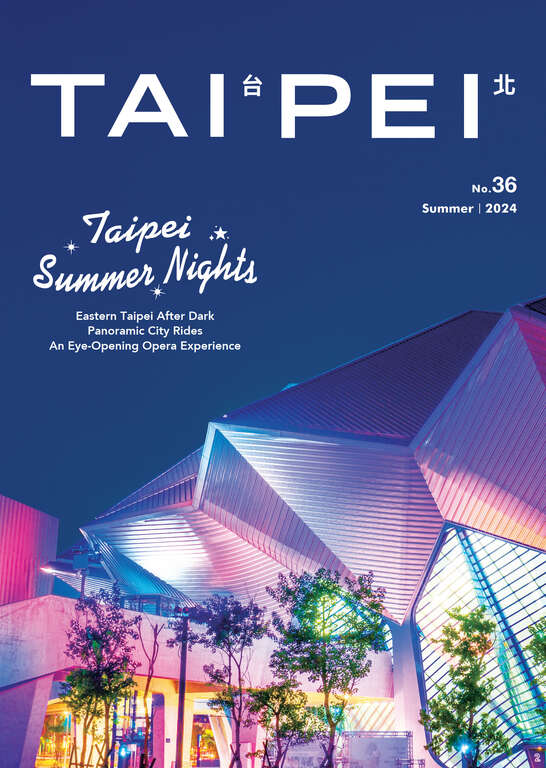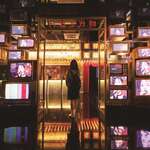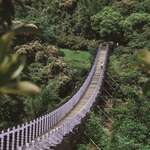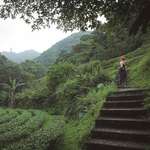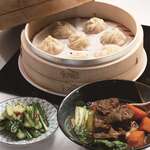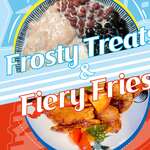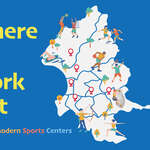Post date:2024-06-11
644
TAIPEI #36 (2024 Summer)
Eastern Taipei After Dark
Discovering Lesser-Known Evening Attractions in Songshan and Nangang Districts
Text Han Cheung
Photos Vision, Department of Information and Tourism
Taiwan's busy yet mild-mannered capital comes alive after the sun sets. Whether you want to party it up, watch a live performance, or just relax by the river, there's always a reason to stay out just a bit longer. Don't worry about sustenance, as chances are there's an eatery, night market, or 24-hour convenience store conveniently near at hand.
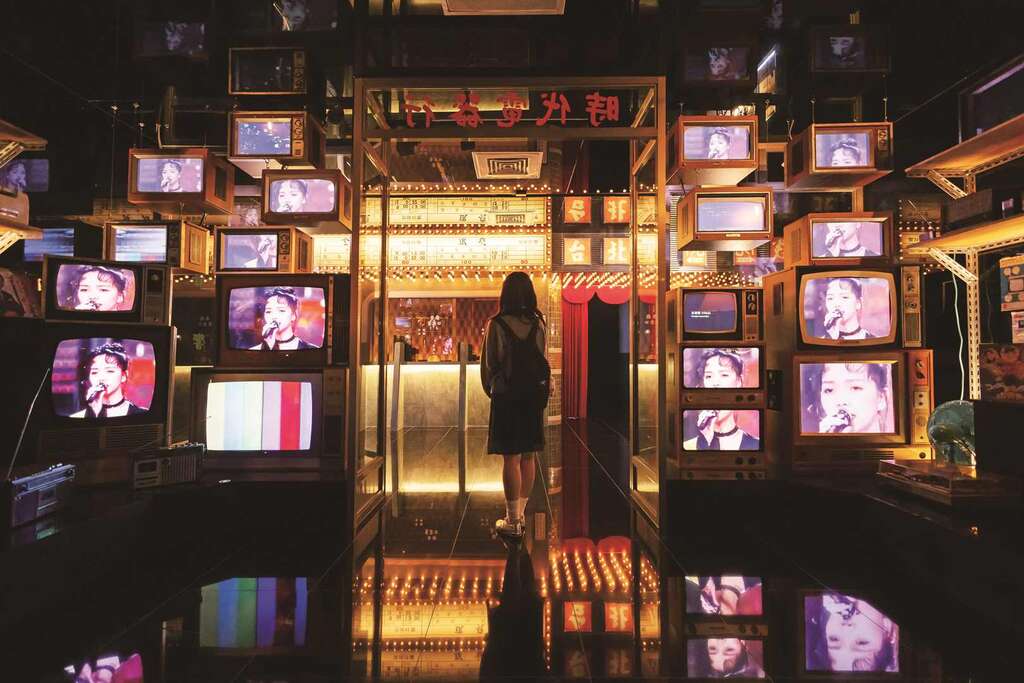 ▲Taiwan pop music exhibition inside the Taipei Music Center's Cultural Cube
▲Taiwan pop music exhibition inside the Taipei Music Center's Cultural Cube
Located in the quieter eastern part of Taipei City, Songshan and Nangang districts do not immediately come to mind when it comes to nightlife – even though the former is home to the popular Raohe Street Night Market.
The area around this market was one of Taipei's most prosperous neighborhoods during the 1800s due to the bustling Xikou Wharf on the Keelung River. Renamed Songshan in 1920, Xikou diminished in importance over the 20th century, but the opening of the night market in 1987 rejuvenated it as a commercial hotspot. After sampling the market stalls and brick-and-mortar operators, people often visit Songshan Ciyou Temple (in existence since 1753) or relax in the close-by riverside park. Today's Songshan District encompasses a much larger area than the original Xikou area, and is a major financial hub and shopping district. Among its other attractions are the Taipei Arena and Minsheng Community. Interestingly, the popular Songshan Cultural and Creative Park is situated in Xinyi District rather than Songshan. So, as you explore, keep this distinction in mind to avoid any confusion.
Home to the national research hub Academia Sinica, the sleepy district of Nangang wasn't incorporated into Taipei until 1968. It was mostly developed as an industrial district, with little to offer tourists, but things have changed in recent decades with the completion of the Nangang Exhibition Center in 2008 and the transformation of the Nangang Railway Station into a major transport center where Taipei Metro, Taiwan Railway, and Taiwan High Speed Rail services meet. The Citylink mall built above the station in 2014 brought life to a nondescript stretch of Zhongxiao East Road, and since 2020 the adjacent brand-new Taipei Music Center complex has further boosted entertainment opportunities
in the area.
Songshan District
Those hankering for a brief respite from the hubbub of the concrete jungle need not go far. One of Taipei's most pleasant features is its network of verdant riverside parks, separated from the rest of the city by flood walls. An excellent system of cycling and walking paths is part of these parks, the paths running along both banks of the Tamsui, Keelung, Xindian, and Jingmei rivers and connecting with surrounding New Taipei City.
One scenic and easily accessible choice is Chengmei Left Bank Riverside Park, just north of Raohe Street Night Market and a 5min walk from the MRT Songshan Station. It sits on the former location of the once-bustling Xikou Wharf. For more than a century, all river-transport vessels traveling between the Tamsui River wharfs in the settlements of Dadaocheng and Bangka to the west and toward the major seaport of Keelung to the northeast had tostop at Xikou.
While Xikou as a whole remained a commercial center, the wharf fell into disuse due to the completion of a Keelung-Taipei railway in the late 1800s and sediment buildup in the river, which made boat navigation difficult.
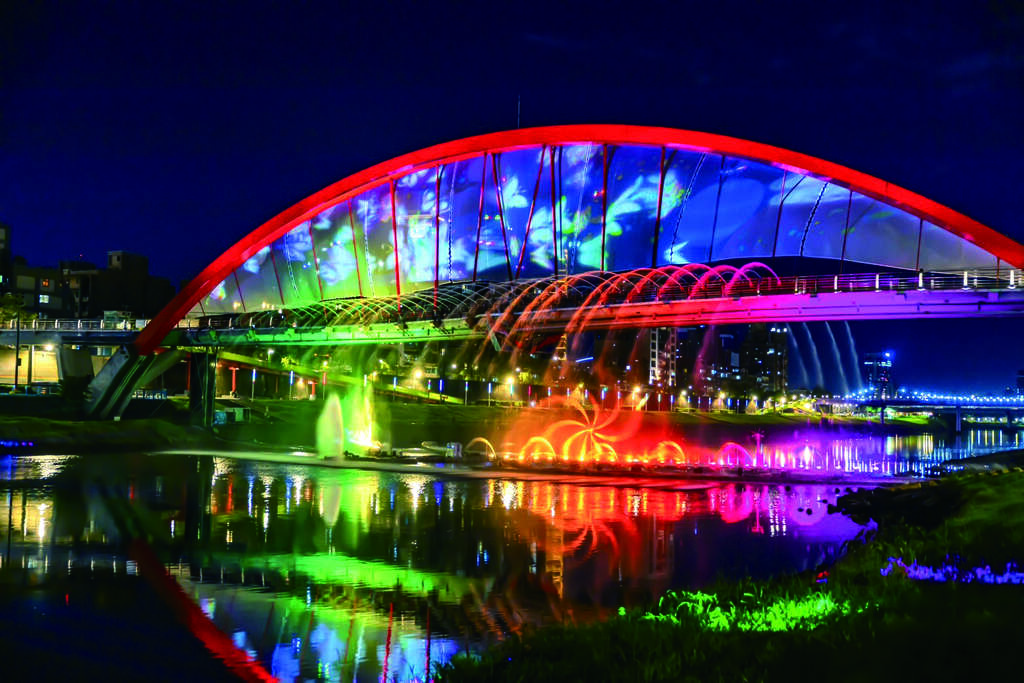 ▲The Rainbow Bridge during the Taipei Water Dance Festival
▲The Rainbow Bridge during the Taipei Water Dance Festival
Completed in 2007, the mildly S-shaped pedestrian Rainbow Bridge connects Chengmei Left Bank Riverside Park and Chengmei Right Bank Riverside Park in the Songshan and Neihu districts, respectively, and is noted for its bright-red supporting arch. This walkway is an ideal spot to gaze upon sweeping vistas of river, mountains, and cityscape and to watch the sunset. Illuminated in changing colors at night, the bridge's intersecting curves and upside-down reflection in the water is a favorite for photographers – especially with the yellow, double-decker arched First MacArthur Bridge in the background.
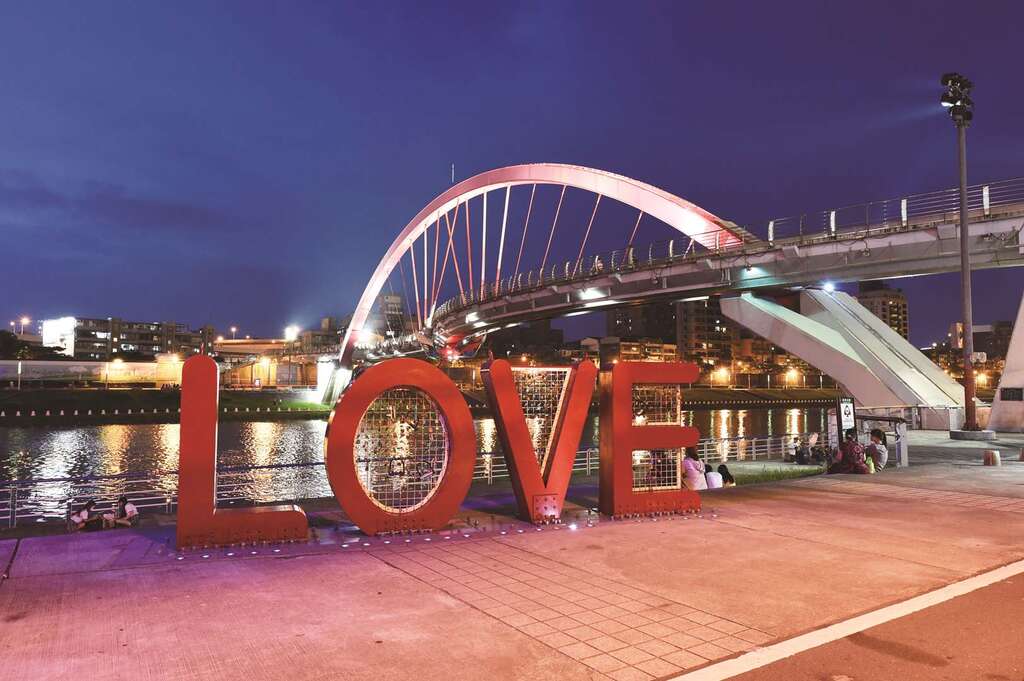 ▲LOVE sign in Chengmei Left Bank Riverside Park
▲LOVE sign in Chengmei Left Bank Riverside Park
Many joggers and cyclists pass through the park on their exercise routines, while others come to enjoy the summer breezes and have a picnic. Due to its proximity to the night market, it's a delightful spot for a digestion-aiding stroll after a hearty meal.
The love-themed plaza below the bridge, featuring a large public-artwork sculpture of the word LOVE, is a popular spot for couples to canoodle, complete with love seats and a path displaying the word "love" in 12 different languages. The LOVE sign has a wire mesh behind the letters for amorous visitors to place padlocks as a symbol of their unions. People used to throw the key into the river afterward; to discourage such behavior, the city has set up a "love mailbox" next to the sign for key depositing.
Until the end of June, visitors will be treated to a dazzling symphony of light, sound, and color during the Taipei Water Dance Festival, with spectacular water patterns streaming from below and above the bridge. The different themed displays are each 5min long, taking place every 30min from 7pm to 9pm daily, and the closing ceremony on June 30 will showcase some of Taiwan's hottest musical acts. As well, check out the 40m-long LED rainbow corridor and rainbow wall installations.
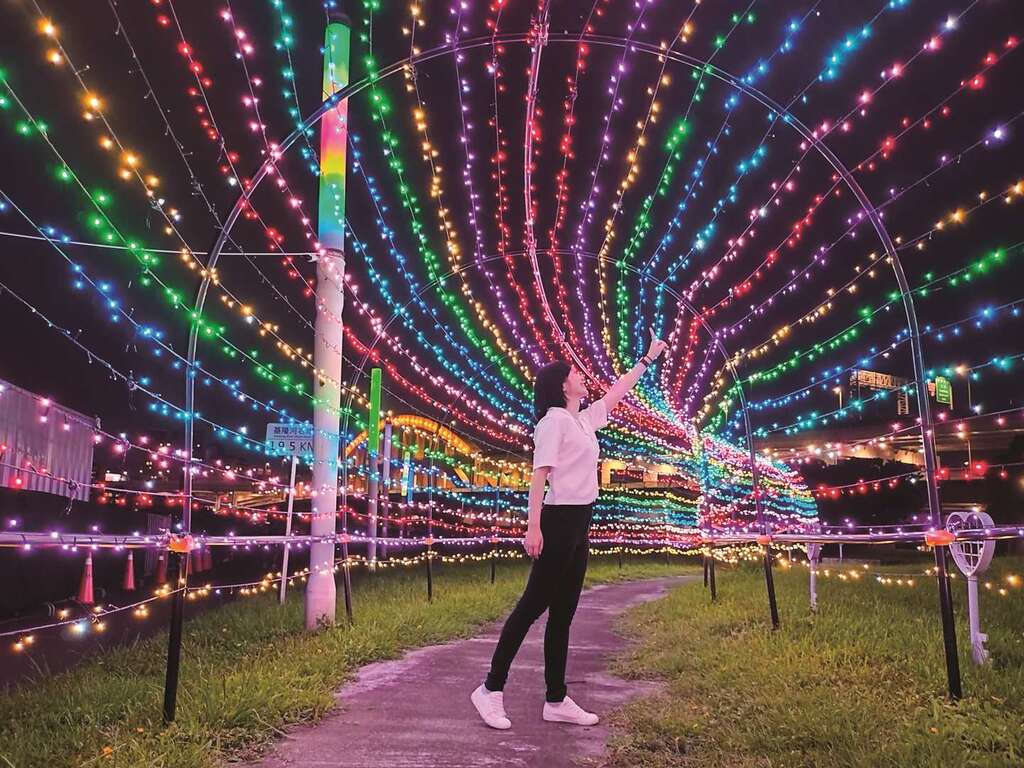 ▲LED rainbow corridor
▲LED rainbow corridor
Brightly lit up at night, the impressive six-story Songshan Ciyou Temple is a major landmark in the Xikou area. Located at the eastern entrance of Raohe Street Night Market, visitors are welcome to drop by and learn about Taiwan's temple culture while marveling at its intricate architectural and decorative motifs. Established in 1757 by a wandering monk, the temple's principal deity is Mazu, Goddess of the Sea, who protected the cargo craft and fishing vessels that dotted the Keelung River during Xikou's heyday. The square temple structure has undergone numerous renovations and expansions over the centuries.
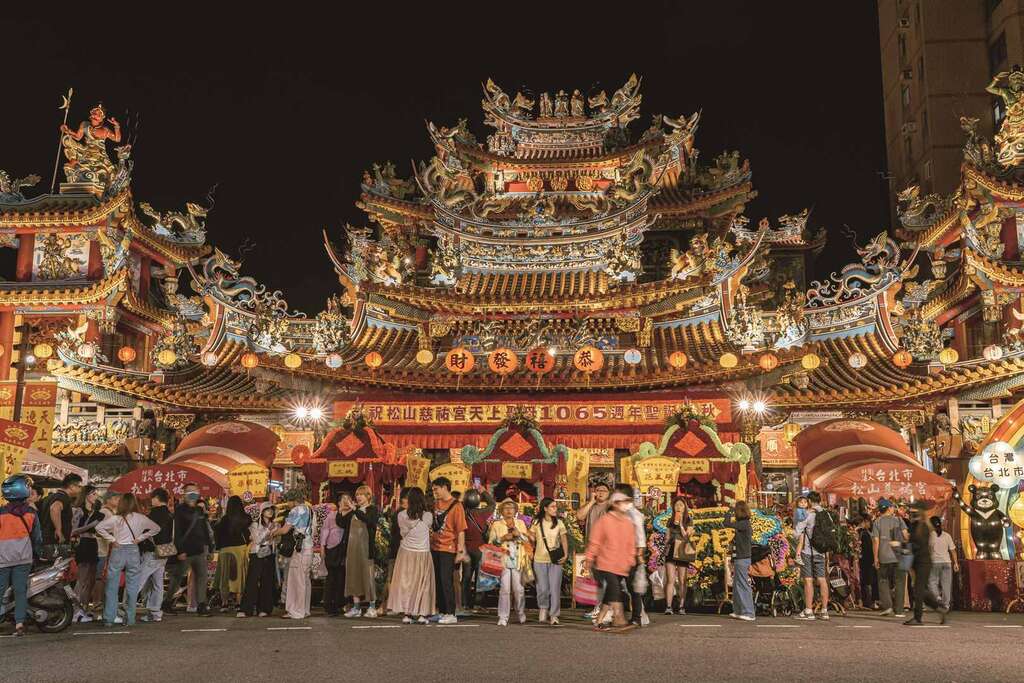 ▲Songshan Ciyou Temple
▲Songshan Ciyou Temple
Make sure you enter the spacious main hall through the right-side door. Beyond Mazu, a Daoist deity, numerous other Daoist and Buddhist deities are also housed here, some offering specific services pertaining to childbirth, love, prosperity, health, and academic success. The temple has worshiping instructions for those inclined.
A quiet artery by day, the unassuming Raohe Street wakes up at dusk as vendors arrive with their metal carts, neatly lining them up as hungry locals and tourists trickle in. Overshadowed by rapid development in the neighboring Daan District, Xikou suffered a major blow in 1975 when a street-widening project in the area caused many businesses to relocate. Xikou Street, renamed Raohe Street after World War II, barely saw any commercial activity over the next decade-plus, until the night market opened in 1987.
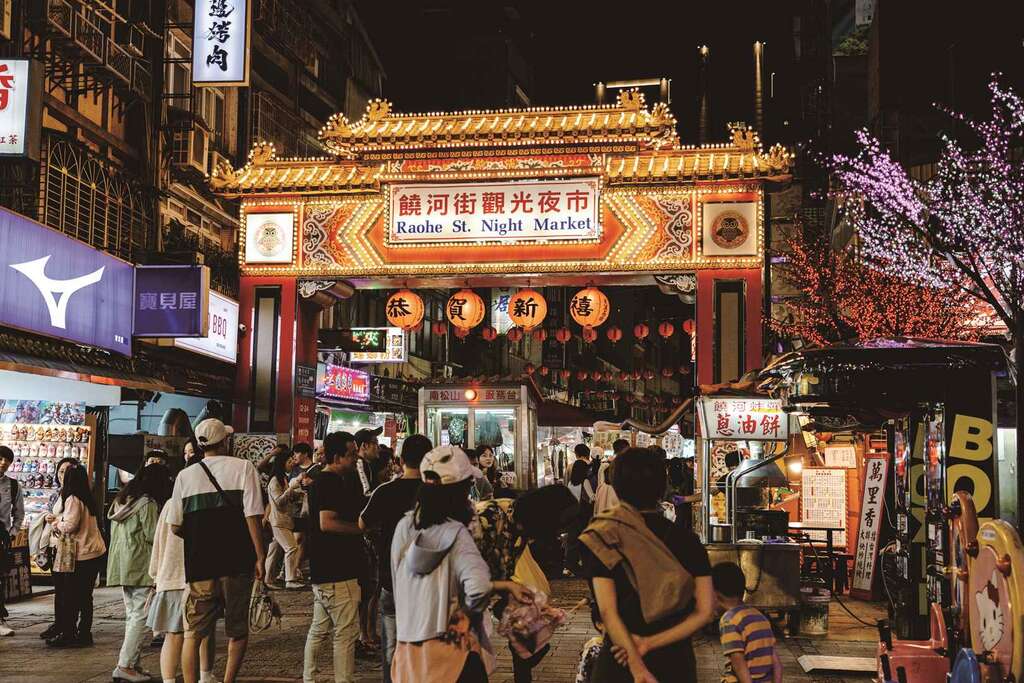 ▲Raohe Street Night Market
▲Raohe Street Night Market
While jewelry, clothes, souvenirs, and other household goods are also sold here, the main draw is undoubtedly the food. You'll find the whole catalog of Taiwanese snack staples here, such as fried chicken, grilled squid, stinky tofu, oyster vermicelli, and scallion pancakes, along with Japanese, Korean, and other international-cuisine delectables.
A long queue can be seen just inside the street's eastern entrance as people wait patiently for the famous Fuzhou Black Pepper Bun, which are baked on the inside walls of large urns. The pork-filled pastries are slightly burnt and crunchy on the outside, but the inside is juicy with a hint of black pepper. Chen Dong Pork Ribs Medicinal Herbs Soup are also a favorite, the tender meat slow-cooked in a traditional Chinese medicinal broth. Cool off with Yu Pin Yuan's refreshingly sweet "ice and fire" glutinous rice balls, which come in sesame and peanut flavors.
With most of Taiwan's indigenous settlements concentrated in the eastern and southern parts of the island, there are few opportunities to sample tribal foods in Taipei. Opened last year, Cinunan Indigenous Restaurant is somewhat hidden behind the elevated overpass to the First MacArthur Bridge at the end of Nanjing East Road. It's just a 5min walk from Raohe Street Night Market's western entrance, and about a 10min stroll from MRT Nanjing Sanmin Station.
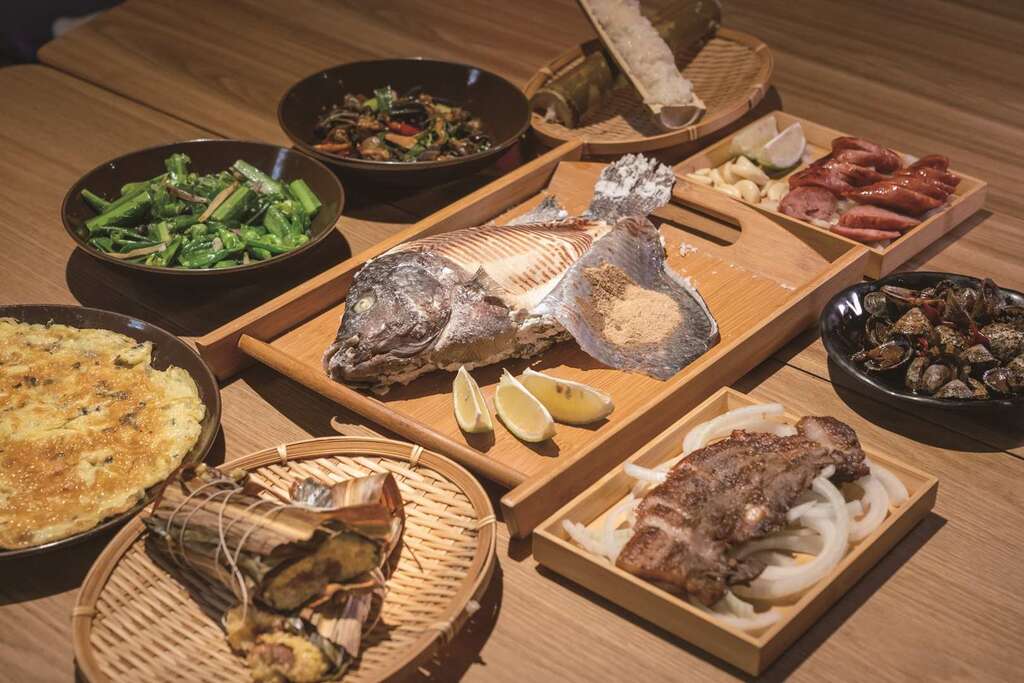 ▲Specialties from the indigenous Paiwan and Amis peoples
▲Specialties from the indigenous Paiwan and Amis peoples
Decorated with motifs from the Paiwan culture centered on Pingtung County in the island's far south, Cinunan means "hunter" in the Paiwan language. The menu is mostly a mix of dishes from the mountain-dwelling Paiwan and maritime Amis (or Pangcah), Taiwan's most populous indigenous group, which inhabits the coastal region of Hualien and Taitung counties. Glutinous rice steamed in a bamboo tube and cinavu (leaf-wrapped food containing millet, rice or taro), millet with pork wrapped in shell ginger leaves, make up the starch staples, and among the distinctive seasonings are magao (mountain peppercorn) and prickly ash leaves. Barnacles, grilled fish, sausage, salted pork, and a wide range of wild vegetables round out your savories.
The atmosphere gets quite lively as the night goes on, with parties at each table taking turns belting out karaoke tunes. Musicians put on lively interactive shows on Saturday evenings. The bar downstairs offers a wide range of libations, including millet wine and rice wine cocktail indigenous specialties.
Nangang District
The opening of the Taipei Music Center in 2020 further transformed the once-unmemorable Section 7 of Zhongxiao East Road into a buzzing hotspot. Located about a 10min walk from MRT Kunyang Station, the multipurpose complex contains a state-of-the-art concert hall that can accommodate 5,000 people, an exhibition building showcasing Taiwan's storied pop music history, music-oriented shops, an outdoor plaza for events, and a variety of bars, cafés, and restaurants.
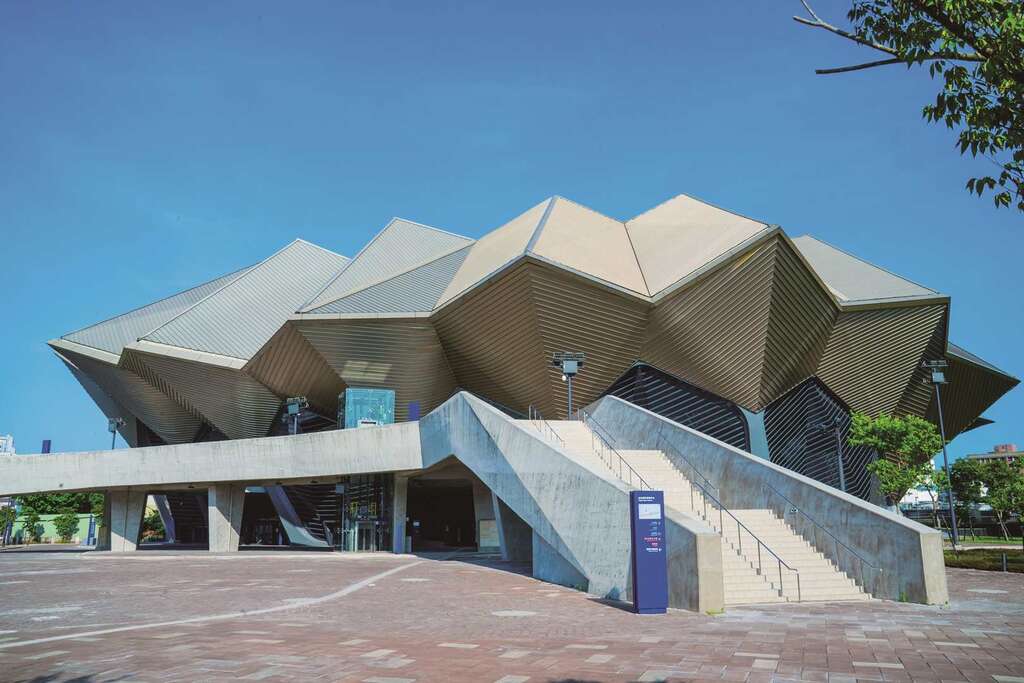 ▲Concert Hall of the Taipei Music Center
▲Concert Hall of the Taipei Music Center
As Asia's first center dedicated exclusively to popular music, the compound also serves as an incubator for musical talent, with classrooms and practice and performance spaces as well as recording and production studios, connecting the different ends of the industry in one location.
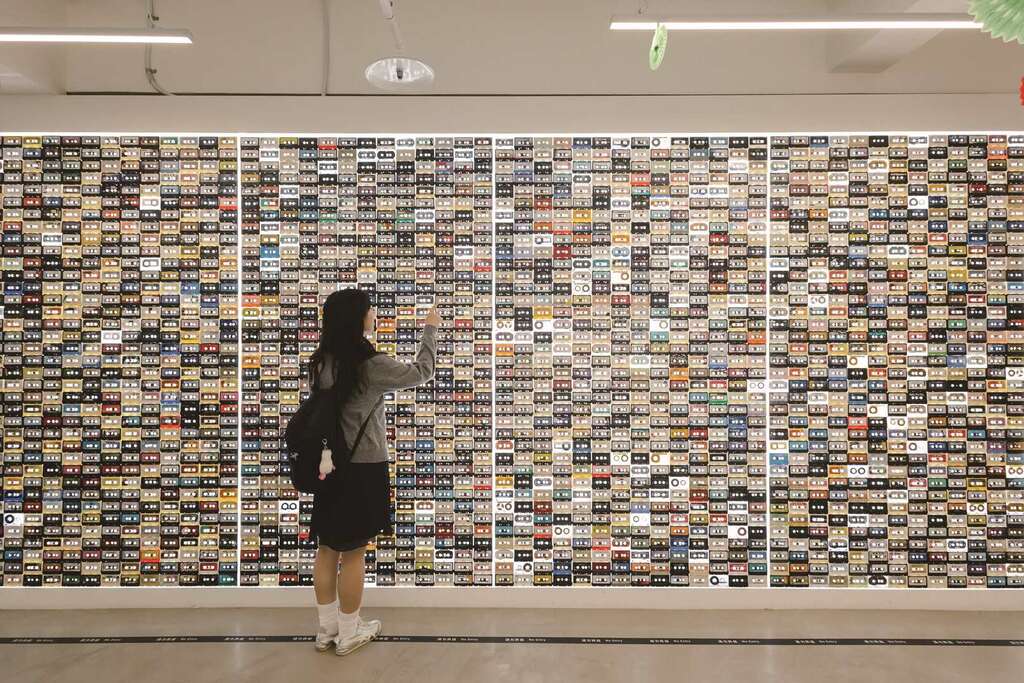 ▲Old cassette tapes on display in the Cultural Cube
▲Old cassette tapes on display in the Cultural Cube
Taiwan has long been a major hub for Mandarin pop music, and its artists have enjoyed much popularity in China, Singapore, Malaysia, and the Chinese-speaking communities in the US and other locales. Many foreign musicians have also enjoyed long and successful careers here, using Taiwan as their base. On the other hand, during the martial law period the Taiwanese-language scene persisted despite government suppression, and in recent decades Hakka and indigenous artists have been emboldened to draw from their cultural backgrounds, melding elements of their heritage with metal, hip-hop, EDM, and other trendy stylings. With this increased diversity and acceptance of musical genres once relegated to the"underground," Taiwan's popular music scene is now richer than ever.
 ▲The Cultural Cube's Music, Island, Stories: Pop Music in Taiwan exhibition introduces you to a century of pop music in Taiwan
▲The Cultural Cube's Music, Island, Stories: Pop Music in Taiwan exhibition introduces you to a century of pop music in Taiwan
Learn about this history at the Cultural Cube's Music, Island, Stories: Pop Music in Taiwan permanent exhibition, which takes visitors on an immersive journey covering an entire century from the 1895~1945 Japanese era to the modern day. The exhibit rooms are thoughtfully designed to transport visitors back in time, and more than 1,000 fascinating artifacts are on display. Your journey concludes with a simulated concert experience with panoramic projections and lighting effects. It's clear here that "pop" music doesn't just refer to the musical genre; it's more about artists and movements that have left a lasting impact on Taiwanese society and culture – whether it be reflective ballads, campus folk, or heavy metal.
Both music lovers and professionals will enjoy browsing the shops located in the complex, including specialty boutiques for accordions, saxophones, pianos, guitars, speakers, and DJ equipment. The DaTao Vinyl Records Store offers more than 30,000 records that can be enjoyed using earphones, record players, and sound systems in a cozy setting.
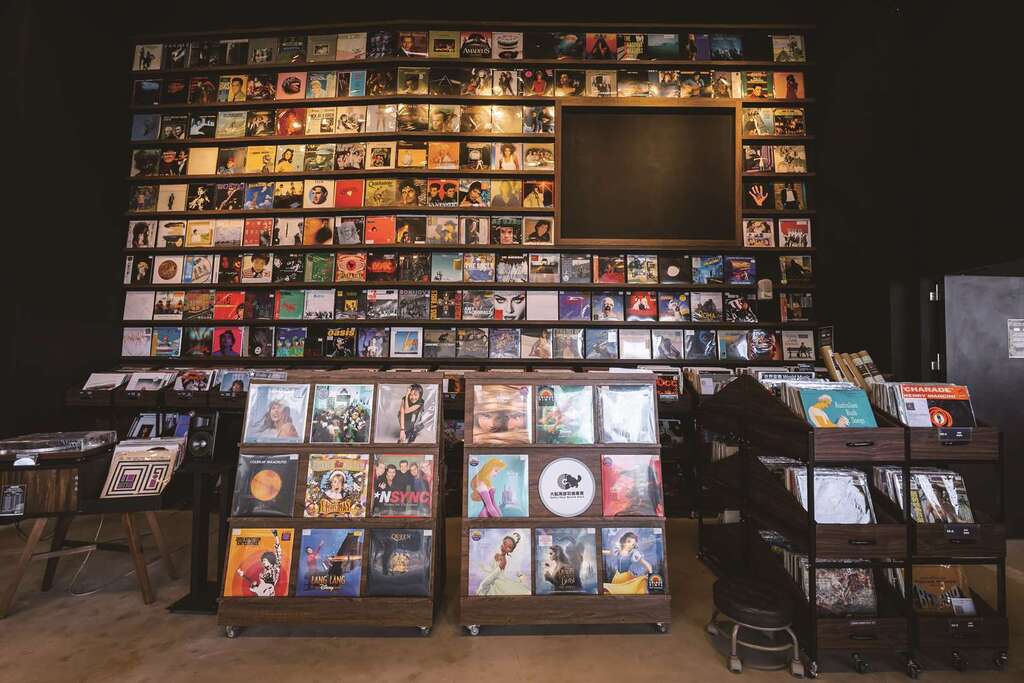 ▲DaTao Vinyl Records Store
▲DaTao Vinyl Records Store
The spaceship-like Concert Hall, shape design inspired by Taiwan's majestic mountains, regularly hosts some of the biggest domestic and international artists, as well as such major events as the Golden Melody Awards, Golden Indie Music Awards, and season two finale of the hit The Rappers hip-hop competition.
The Taipei City Government is also putting on the Taipei Focus music festival (Sept. 2-8), which will connect the center with local businesses and creatives in the Nangang and Xinyi districts.
The Taipei Music Center transforms into an atmospheric setting to unwind at night as multicolored lights give ambiance to the futuristic buildings and complex grounds. Eight light-art installations created in collaboration by musicians and artists can be found on the lawns extending from each end of the main buildings, encouraging visitors to explore the vicinity.
There has long been a lack of options for after-hours activities in Nangang, given its modern history as an industrial and residential zone somewhat isolated from the city center. Until recently, most partygoers headed straight to Xinyi or Daan districts for entertainment, but things began to change with the establishment of the Citylink shopping complex. The Taipei Music Center added to the district's offerings with the opening of Kafka by TMC live music bar in 2022, and today it has several more options – including a coffee shop that stays open until 2am, a concept previously unheard of in Nangang.
 ▲Kafka by TMC has a small stage for live music performances
▲Kafka by TMC has a small stage for live music performances
Electric guitar installation artworks guide the way to Kafka by TMC, a resto-bar on the 5th floor of the Taipei Music Center's crystal-shaped Creative Hub building, which currently provides live music by up-and-coming artists every Saturday in addition to special events. It's a convenient place to grab a bite or drink after enjoying a performance or touring the Cultural Cube, which closes at 6pm.

Kafka by TMC is considered a continuation of Kafka by the Sea, a beloved indie stomping ground in the city's south-section Gongguan neighborhood, which closed down in 2022 after 17 years in business. The industrial-chic interior is complemented by natural wood and plants, and the floor-to-ceiling windows provide ambient lighting and intriguing views of the Creative Hub's crisscrossing beams as well as the surrounding area. The food menu consists of a smattering of international fare, including Thai minced pork rice, tonkatsu ramen, spaghetti, and a variety of salads and appetizers. The crispy German-style pork knuckles are an especially hot-order item. There are also desserts and a selection of drinks, including draft beers and beer-based fruit cocktails.
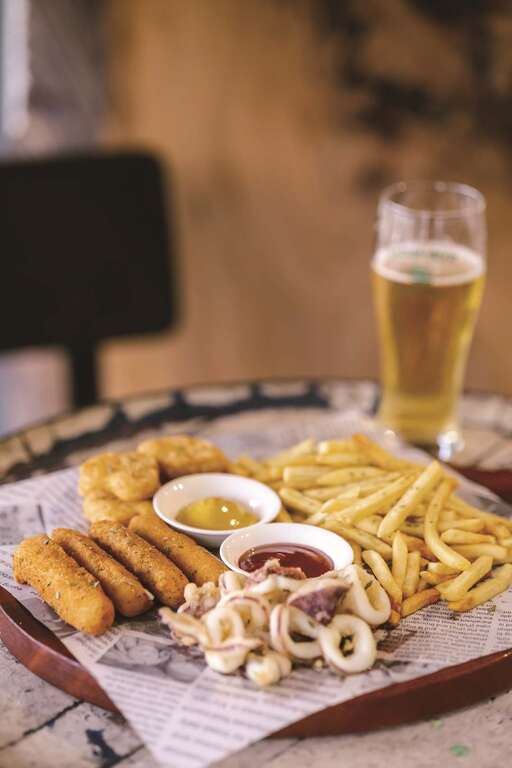 ▲Pub grub served by Kafka by TMC to complement the experience
▲Pub grub served by Kafka by TMC to complement the experience
Make sure you check ahead for that day's opening hours, as the venue is sometimes booked for private events.
While Kafka by TMC closes at 10pm, a newly opened row of establishments on the side of the Cultural Cube keeps the party going by staying open until midnight on weekdays and 2am on weekends. Collectively known as the W9T Area, these attractions offer mostly outside seating with periodical live performances.
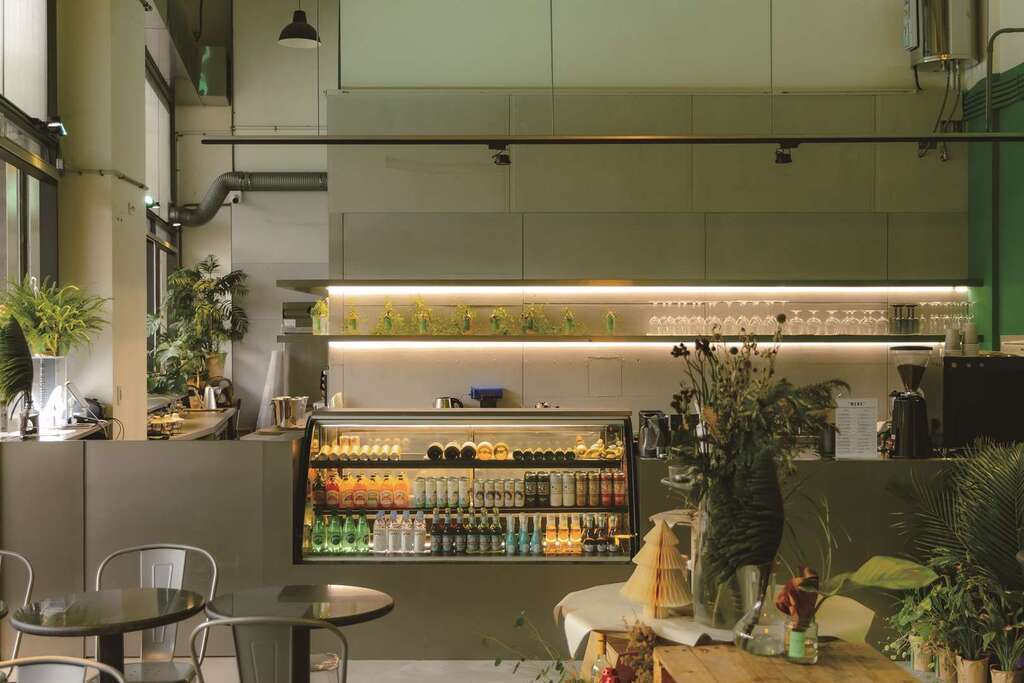 ▲Both hard and soft drinks can be enjoyed in the W9T Area
▲Both hard and soft drinks can be enjoyed in the W9T Area
Patrons can purchase a bottle of craft beer or wine from the dizzying array of choices at the W9T "convenience store" (ask the staff for recommendations), order a Mandopop-themed draft cocktail from Hold On Draft, or sample Japanese sake, plum wine, and whiskeys at Chotto Sake bar. Those who prefer to sit inside can visit Take Your Time Café and sip on alcoholic or nonalcoholic coffees, teas, or soft drinks. The area shares a food menu, which includes meat pies, pizzas, French fries, cold cuts, and a variety of fried appetizers.
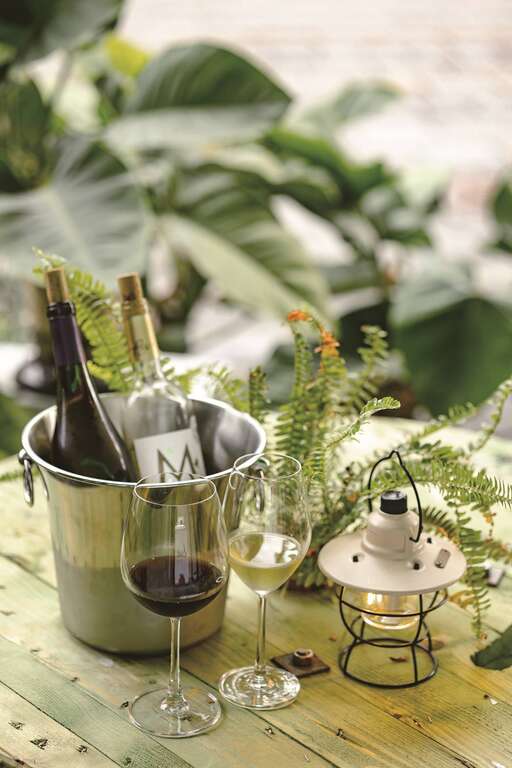
🍷Please drink responsibly
🔎
Bangka 艋舺
Chengmei Left/Right Bank Riverside Park
成美左/右岸河濱公園
Dadaocheng 大稻埕
Minsheng Community 民生社區
Nangang Exhibition Center 南港展覽館
Rainbow Bridge 彩虹橋
Raohe Street Night Market 饒河街夜市
Songshan Ciyou Temple 松山慈祐宮
Songshan Cultural and Creative Park 松山文創園區
Taipei Arena 台北小巨蛋
Taipei Focus 台北潮國際
Taipei Music Center 台北流行音樂中心
Taipei Water Dance Festival 台北水舞嘉年華
W9T Area 酒等了
Xikou Wharf 錫口碼頭
🗺️Click here to see aforementioned spots on Google Map
Eastern Taipei After Dark
Discovering Lesser-Known Evening Attractions in Songshan and Nangang Districts
Text Han Cheung
Photos Vision, Department of Information and Tourism
Taiwan's busy yet mild-mannered capital comes alive after the sun sets. Whether you want to party it up, watch a live performance, or just relax by the river, there's always a reason to stay out just a bit longer. Don't worry about sustenance, as chances are there's an eatery, night market, or 24-hour convenience store conveniently near at hand.
 ▲Taiwan pop music exhibition inside the Taipei Music Center's Cultural Cube
▲Taiwan pop music exhibition inside the Taipei Music Center's Cultural CubeLocated in the quieter eastern part of Taipei City, Songshan and Nangang districts do not immediately come to mind when it comes to nightlife – even though the former is home to the popular Raohe Street Night Market.
The area around this market was one of Taipei's most prosperous neighborhoods during the 1800s due to the bustling Xikou Wharf on the Keelung River. Renamed Songshan in 1920, Xikou diminished in importance over the 20th century, but the opening of the night market in 1987 rejuvenated it as a commercial hotspot. After sampling the market stalls and brick-and-mortar operators, people often visit Songshan Ciyou Temple (in existence since 1753) or relax in the close-by riverside park. Today's Songshan District encompasses a much larger area than the original Xikou area, and is a major financial hub and shopping district. Among its other attractions are the Taipei Arena and Minsheng Community. Interestingly, the popular Songshan Cultural and Creative Park is situated in Xinyi District rather than Songshan. So, as you explore, keep this distinction in mind to avoid any confusion.
Home to the national research hub Academia Sinica, the sleepy district of Nangang wasn't incorporated into Taipei until 1968. It was mostly developed as an industrial district, with little to offer tourists, but things have changed in recent decades with the completion of the Nangang Exhibition Center in 2008 and the transformation of the Nangang Railway Station into a major transport center where Taipei Metro, Taiwan Railway, and Taiwan High Speed Rail services meet. The Citylink mall built above the station in 2014 brought life to a nondescript stretch of Zhongxiao East Road, and since 2020 the adjacent brand-new Taipei Music Center complex has further boosted entertainment opportunities
in the area.
Songshan District
Those hankering for a brief respite from the hubbub of the concrete jungle need not go far. One of Taipei's most pleasant features is its network of verdant riverside parks, separated from the rest of the city by flood walls. An excellent system of cycling and walking paths is part of these parks, the paths running along both banks of the Tamsui, Keelung, Xindian, and Jingmei rivers and connecting with surrounding New Taipei City.
One scenic and easily accessible choice is Chengmei Left Bank Riverside Park, just north of Raohe Street Night Market and a 5min walk from the MRT Songshan Station. It sits on the former location of the once-bustling Xikou Wharf. For more than a century, all river-transport vessels traveling between the Tamsui River wharfs in the settlements of Dadaocheng and Bangka to the west and toward the major seaport of Keelung to the northeast had tostop at Xikou.
While Xikou as a whole remained a commercial center, the wharf fell into disuse due to the completion of a Keelung-Taipei railway in the late 1800s and sediment buildup in the river, which made boat navigation difficult.
 ▲The Rainbow Bridge during the Taipei Water Dance Festival
▲The Rainbow Bridge during the Taipei Water Dance FestivalCompleted in 2007, the mildly S-shaped pedestrian Rainbow Bridge connects Chengmei Left Bank Riverside Park and Chengmei Right Bank Riverside Park in the Songshan and Neihu districts, respectively, and is noted for its bright-red supporting arch. This walkway is an ideal spot to gaze upon sweeping vistas of river, mountains, and cityscape and to watch the sunset. Illuminated in changing colors at night, the bridge's intersecting curves and upside-down reflection in the water is a favorite for photographers – especially with the yellow, double-decker arched First MacArthur Bridge in the background.
 ▲LOVE sign in Chengmei Left Bank Riverside Park
▲LOVE sign in Chengmei Left Bank Riverside ParkMany joggers and cyclists pass through the park on their exercise routines, while others come to enjoy the summer breezes and have a picnic. Due to its proximity to the night market, it's a delightful spot for a digestion-aiding stroll after a hearty meal.
The love-themed plaza below the bridge, featuring a large public-artwork sculpture of the word LOVE, is a popular spot for couples to canoodle, complete with love seats and a path displaying the word "love" in 12 different languages. The LOVE sign has a wire mesh behind the letters for amorous visitors to place padlocks as a symbol of their unions. People used to throw the key into the river afterward; to discourage such behavior, the city has set up a "love mailbox" next to the sign for key depositing.
Until the end of June, visitors will be treated to a dazzling symphony of light, sound, and color during the Taipei Water Dance Festival, with spectacular water patterns streaming from below and above the bridge. The different themed displays are each 5min long, taking place every 30min from 7pm to 9pm daily, and the closing ceremony on June 30 will showcase some of Taiwan's hottest musical acts. As well, check out the 40m-long LED rainbow corridor and rainbow wall installations.
 ▲LED rainbow corridor
▲LED rainbow corridorBrightly lit up at night, the impressive six-story Songshan Ciyou Temple is a major landmark in the Xikou area. Located at the eastern entrance of Raohe Street Night Market, visitors are welcome to drop by and learn about Taiwan's temple culture while marveling at its intricate architectural and decorative motifs. Established in 1757 by a wandering monk, the temple's principal deity is Mazu, Goddess of the Sea, who protected the cargo craft and fishing vessels that dotted the Keelung River during Xikou's heyday. The square temple structure has undergone numerous renovations and expansions over the centuries.
 ▲Songshan Ciyou Temple
▲Songshan Ciyou TempleMake sure you enter the spacious main hall through the right-side door. Beyond Mazu, a Daoist deity, numerous other Daoist and Buddhist deities are also housed here, some offering specific services pertaining to childbirth, love, prosperity, health, and academic success. The temple has worshiping instructions for those inclined.
A quiet artery by day, the unassuming Raohe Street wakes up at dusk as vendors arrive with their metal carts, neatly lining them up as hungry locals and tourists trickle in. Overshadowed by rapid development in the neighboring Daan District, Xikou suffered a major blow in 1975 when a street-widening project in the area caused many businesses to relocate. Xikou Street, renamed Raohe Street after World War II, barely saw any commercial activity over the next decade-plus, until the night market opened in 1987.
 ▲Raohe Street Night Market
▲Raohe Street Night MarketWhile jewelry, clothes, souvenirs, and other household goods are also sold here, the main draw is undoubtedly the food. You'll find the whole catalog of Taiwanese snack staples here, such as fried chicken, grilled squid, stinky tofu, oyster vermicelli, and scallion pancakes, along with Japanese, Korean, and other international-cuisine delectables.
A long queue can be seen just inside the street's eastern entrance as people wait patiently for the famous Fuzhou Black Pepper Bun, which are baked on the inside walls of large urns. The pork-filled pastries are slightly burnt and crunchy on the outside, but the inside is juicy with a hint of black pepper. Chen Dong Pork Ribs Medicinal Herbs Soup are also a favorite, the tender meat slow-cooked in a traditional Chinese medicinal broth. Cool off with Yu Pin Yuan's refreshingly sweet "ice and fire" glutinous rice balls, which come in sesame and peanut flavors.
With most of Taiwan's indigenous settlements concentrated in the eastern and southern parts of the island, there are few opportunities to sample tribal foods in Taipei. Opened last year, Cinunan Indigenous Restaurant is somewhat hidden behind the elevated overpass to the First MacArthur Bridge at the end of Nanjing East Road. It's just a 5min walk from Raohe Street Night Market's western entrance, and about a 10min stroll from MRT Nanjing Sanmin Station.
 ▲Specialties from the indigenous Paiwan and Amis peoples
▲Specialties from the indigenous Paiwan and Amis peoplesDecorated with motifs from the Paiwan culture centered on Pingtung County in the island's far south, Cinunan means "hunter" in the Paiwan language. The menu is mostly a mix of dishes from the mountain-dwelling Paiwan and maritime Amis (or Pangcah), Taiwan's most populous indigenous group, which inhabits the coastal region of Hualien and Taitung counties. Glutinous rice steamed in a bamboo tube and cinavu (leaf-wrapped food containing millet, rice or taro), millet with pork wrapped in shell ginger leaves, make up the starch staples, and among the distinctive seasonings are magao (mountain peppercorn) and prickly ash leaves. Barnacles, grilled fish, sausage, salted pork, and a wide range of wild vegetables round out your savories.
The atmosphere gets quite lively as the night goes on, with parties at each table taking turns belting out karaoke tunes. Musicians put on lively interactive shows on Saturday evenings. The bar downstairs offers a wide range of libations, including millet wine and rice wine cocktail indigenous specialties.
| FUZHOU BLACK PEPPER BUN 福州世祖胡椒餅 3:30pm-11:30pm CHEN DONG PORK RIBS MEDICINAL HERBS SOUP 陳董藥燉排骨 4:30pm-11:00pm, closed on Tuesday YU PIN YUAN 御品元冰火湯圓 5:00pm-12:00am Cinunan Indigenous Restaurant 祈駑南原住民餐酒館 🚩 393, Sec. 5, Nanjing E. Rd., Songshan Dist. 📞 (02) 8787-1157 🕝 6:00pm-3:00am 🔗instagram.com/cinunan_ |
Nangang District
The opening of the Taipei Music Center in 2020 further transformed the once-unmemorable Section 7 of Zhongxiao East Road into a buzzing hotspot. Located about a 10min walk from MRT Kunyang Station, the multipurpose complex contains a state-of-the-art concert hall that can accommodate 5,000 people, an exhibition building showcasing Taiwan's storied pop music history, music-oriented shops, an outdoor plaza for events, and a variety of bars, cafés, and restaurants.
 ▲Concert Hall of the Taipei Music Center
▲Concert Hall of the Taipei Music CenterAs Asia's first center dedicated exclusively to popular music, the compound also serves as an incubator for musical talent, with classrooms and practice and performance spaces as well as recording and production studios, connecting the different ends of the industry in one location.
 ▲Old cassette tapes on display in the Cultural Cube
▲Old cassette tapes on display in the Cultural CubeTaiwan has long been a major hub for Mandarin pop music, and its artists have enjoyed much popularity in China, Singapore, Malaysia, and the Chinese-speaking communities in the US and other locales. Many foreign musicians have also enjoyed long and successful careers here, using Taiwan as their base. On the other hand, during the martial law period the Taiwanese-language scene persisted despite government suppression, and in recent decades Hakka and indigenous artists have been emboldened to draw from their cultural backgrounds, melding elements of their heritage with metal, hip-hop, EDM, and other trendy stylings. With this increased diversity and acceptance of musical genres once relegated to the"underground," Taiwan's popular music scene is now richer than ever.
 ▲The Cultural Cube's Music, Island, Stories: Pop Music in Taiwan exhibition introduces you to a century of pop music in Taiwan
▲The Cultural Cube's Music, Island, Stories: Pop Music in Taiwan exhibition introduces you to a century of pop music in TaiwanLearn about this history at the Cultural Cube's Music, Island, Stories: Pop Music in Taiwan permanent exhibition, which takes visitors on an immersive journey covering an entire century from the 1895~1945 Japanese era to the modern day. The exhibit rooms are thoughtfully designed to transport visitors back in time, and more than 1,000 fascinating artifacts are on display. Your journey concludes with a simulated concert experience with panoramic projections and lighting effects. It's clear here that "pop" music doesn't just refer to the musical genre; it's more about artists and movements that have left a lasting impact on Taiwanese society and culture – whether it be reflective ballads, campus folk, or heavy metal.
Both music lovers and professionals will enjoy browsing the shops located in the complex, including specialty boutiques for accordions, saxophones, pianos, guitars, speakers, and DJ equipment. The DaTao Vinyl Records Store offers more than 30,000 records that can be enjoyed using earphones, record players, and sound systems in a cozy setting.
 ▲DaTao Vinyl Records Store
▲DaTao Vinyl Records StoreThe spaceship-like Concert Hall, shape design inspired by Taiwan's majestic mountains, regularly hosts some of the biggest domestic and international artists, as well as such major events as the Golden Melody Awards, Golden Indie Music Awards, and season two finale of the hit The Rappers hip-hop competition.
The Taipei City Government is also putting on the Taipei Focus music festival (Sept. 2-8), which will connect the center with local businesses and creatives in the Nangang and Xinyi districts.
| Taipei Music Center 台北流行音樂中心 🚩 99, Sec. 8, Civic Blvd., Nanggang Dist. 📞 (02) 2788-6620 🔗 www.tmc.taipei/en DATAO VINYL RECORDS STORE 大韜黑膠耳機專賣 🚩 99, Sec. 7, Zhongxiao E. Rd., Nangang Dist. 📞 (02) 2785-7275 🔗 facebook.com/DaTaoVinyl |
The Taipei Music Center transforms into an atmospheric setting to unwind at night as multicolored lights give ambiance to the futuristic buildings and complex grounds. Eight light-art installations created in collaboration by musicians and artists can be found on the lawns extending from each end of the main buildings, encouraging visitors to explore the vicinity.
There has long been a lack of options for after-hours activities in Nangang, given its modern history as an industrial and residential zone somewhat isolated from the city center. Until recently, most partygoers headed straight to Xinyi or Daan districts for entertainment, but things began to change with the establishment of the Citylink shopping complex. The Taipei Music Center added to the district's offerings with the opening of Kafka by TMC live music bar in 2022, and today it has several more options – including a coffee shop that stays open until 2am, a concept previously unheard of in Nangang.
 ▲Kafka by TMC has a small stage for live music performances
▲Kafka by TMC has a small stage for live music performancesElectric guitar installation artworks guide the way to Kafka by TMC, a resto-bar on the 5th floor of the Taipei Music Center's crystal-shaped Creative Hub building, which currently provides live music by up-and-coming artists every Saturday in addition to special events. It's a convenient place to grab a bite or drink after enjoying a performance or touring the Cultural Cube, which closes at 6pm.

Kafka by TMC is considered a continuation of Kafka by the Sea, a beloved indie stomping ground in the city's south-section Gongguan neighborhood, which closed down in 2022 after 17 years in business. The industrial-chic interior is complemented by natural wood and plants, and the floor-to-ceiling windows provide ambient lighting and intriguing views of the Creative Hub's crisscrossing beams as well as the surrounding area. The food menu consists of a smattering of international fare, including Thai minced pork rice, tonkatsu ramen, spaghetti, and a variety of salads and appetizers. The crispy German-style pork knuckles are an especially hot-order item. There are also desserts and a selection of drinks, including draft beers and beer-based fruit cocktails.
 ▲Pub grub served by Kafka by TMC to complement the experience
▲Pub grub served by Kafka by TMC to complement the experienceMake sure you check ahead for that day's opening hours, as the venue is sometimes booked for private events.
| Kafka by TMC Live Music Bar 北流卡夫卡 🚩 99, Sec. 8, Civic Blvd., Nanggang Dist. 📞 (02) 2785-1777 🕝 Tue. to Sun 11:30am-10:00pm 🔗 taipeikafka.com.tw |
While Kafka by TMC closes at 10pm, a newly opened row of establishments on the side of the Cultural Cube keeps the party going by staying open until midnight on weekdays and 2am on weekends. Collectively known as the W9T Area, these attractions offer mostly outside seating with periodical live performances.
 ▲Both hard and soft drinks can be enjoyed in the W9T Area
▲Both hard and soft drinks can be enjoyed in the W9T AreaPatrons can purchase a bottle of craft beer or wine from the dizzying array of choices at the W9T "convenience store" (ask the staff for recommendations), order a Mandopop-themed draft cocktail from Hold On Draft, or sample Japanese sake, plum wine, and whiskeys at Chotto Sake bar. Those who prefer to sit inside can visit Take Your Time Café and sip on alcoholic or nonalcoholic coffees, teas, or soft drinks. The area shares a food menu, which includes meat pies, pizzas, French fries, cold cuts, and a variety of fried appetizers.

🍷Please drink responsibly
🔎
Bangka 艋舺
Chengmei Left/Right Bank Riverside Park
成美左/右岸河濱公園
Dadaocheng 大稻埕
Minsheng Community 民生社區
Nangang Exhibition Center 南港展覽館
Rainbow Bridge 彩虹橋
Raohe Street Night Market 饒河街夜市
Songshan Ciyou Temple 松山慈祐宮
Songshan Cultural and Creative Park 松山文創園區
Taipei Arena 台北小巨蛋
Taipei Focus 台北潮國際
Taipei Music Center 台北流行音樂中心
Taipei Water Dance Festival 台北水舞嘉年華
W9T Area 酒等了
Xikou Wharf 錫口碼頭
🗺️Click here to see aforementioned spots on Google Map
Gallery
:::
Popular articles
 Eastern Taipei After Dark (TAIPEI Quarterly 2024 Summer Vol.36)
Eastern Taipei After Dark (TAIPEI Quarterly 2024 Summer Vol.36) Tranquil Lakes and Scenic Trails (TAIPEI Quarterly 2024 Summer Vol.36)
Tranquil Lakes and Scenic Trails (TAIPEI Quarterly 2024 Summer Vol.36) Stroll, Sip, and Savor the Views (TAIPEI Quarterly 2024 Summer Vol.36)
Stroll, Sip, and Savor the Views (TAIPEI Quarterly 2024 Summer Vol.36) Cooking with CookInn Taiwan (TAIPEI Quarterly 2024 Summer Vol.36)
Cooking with CookInn Taiwan (TAIPEI Quarterly 2024 Summer Vol.36) Frosty Treats & Fiery Fries (TAIPEI Quarterly 2024 Summer Vol.36)
Frosty Treats & Fiery Fries (TAIPEI Quarterly 2024 Summer Vol.36) Where to Work Out (TAIPEI Quarterly 2024 Summer Vol.36)
Where to Work Out (TAIPEI Quarterly 2024 Summer Vol.36)
 Eastern Taipei After Dark (TAIPEI Quarterly 2024 Summer Vol.36)
Eastern Taipei After Dark (TAIPEI Quarterly 2024 Summer Vol.36)